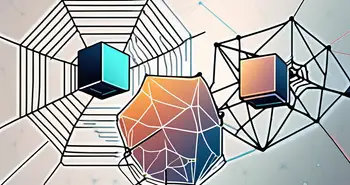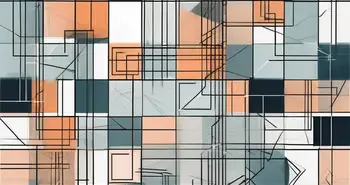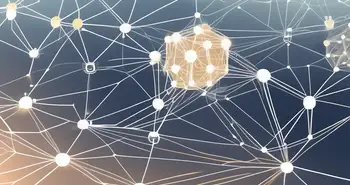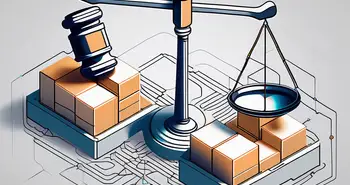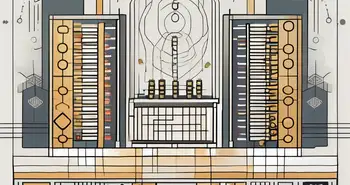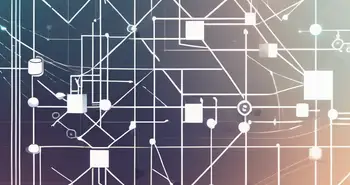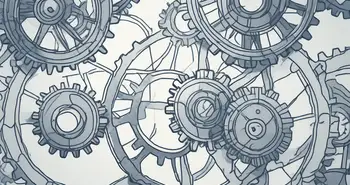What is Censorship Resistance in Blockchain Networks?
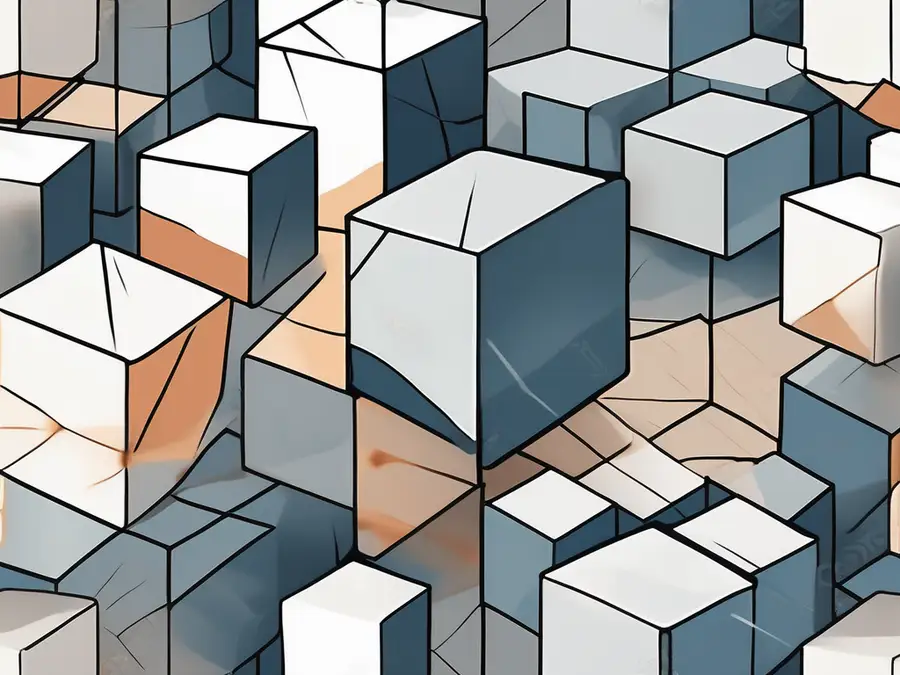
Censorship resistance is a crucial concept in the world of blockchain networks. If you're new to this subject, don't worry – I'm here to guide you through it. Censorship resistance refers to the ability of a blockchain network to remain fully functional, secure, and transparent even in the face of attempts to censor or control it. In other words, it is the ability to resist any centralized authority or third-party interference.
Understanding the Concept of Censorship Resistance
Before we dive into the details, let's start by defining censorship resistance. Simply put, it is the capacity of a blockchain network to withstand censorship attempts. In traditional systems, governments, institutions, or individuals have the power to control or manipulate the flow of information or transactions. Blockchain networks, however, aim to eliminate this vulnerability by leveraging cryptographic technology and peer-to-peer networks.
One of the key aspects of censorship resistance is its role in promoting freedom of speech and expression. By ensuring that no single entity can suppress or alter information on the blockchain, individuals can freely share their thoughts, ideas, and transactions without fear of censorship. This democratization of information empowers users and fosters a more open and inclusive digital environment.
Definition of Censorship Resistance
Censorship resistance can be defined as the ability of a blockchain network to maintain immutability, decentralization, and transparency in the face of attempts to control, manipulate, or censor its activities.
Immutability, a core principle of censorship resistance, refers to the inability to change or tamper with data once it has been recorded on the blockchain. This feature ensures that historical records remain intact and verifiable, enhancing the overall trustworthiness of the network. Decentralization, another critical component, distributes power and decision-making across a network of nodes, preventing any single point of failure or control. Transparency, the third pillar, enables all network participants to access and verify information, fostering accountability and trust among users.
The Importance of Censorship Resistance in Blockchain
Censorship resistance is a fundamental characteristic that sets blockchain apart from traditional centralized systems. It ensures that no single entity or group can dictate the rules or control the network. This decentralization is vital because it promotes transparency, trust, and inclusivity. It enables individuals and businesses to freely participate in the network without the fear of censorship or unfair control.
Furthermore, censorship resistance plays a crucial role in safeguarding against censorship-driven agendas and ensuring the integrity of the network's operations. By upholding principles of neutrality and openness, blockchain networks can serve as a bastion of free exchange and innovation, fostering a more democratic and equitable digital ecosystem for all participants.
The Mechanism of Censorship Resistance in Blockchain
Now that we have a good grasp of what censorship resistance is, let's explore how it is achieved in blockchain networks. There are two key elements that contribute to censorship resistance: decentralization and cryptography.
When it comes to decentralization in blockchain networks, it's not just about spreading power among participants; it's also about creating a trustless system where transactions can be verified without the need for a central authority. This trustless nature is what makes blockchain so resilient to censorship attempts, as there is no single point of control that can be targeted.
The Role of Decentralization
Decentralization is the backbone of censorship resistance in blockchain networks. Unlike traditional centralized systems where power accumulates in the hands of a few, blockchain networks distribute power among a network of participants. This distribution ensures that no single entity or group has the authority to control or censor the network's operations.
Furthermore, decentralization in blockchain networks also promotes transparency and immutability. Every transaction that occurs on the blockchain is recorded and verified by multiple participants, making it nearly impossible to alter the historical record of transactions. This transparency and immutability add another layer of protection against censorship attempts, as any tampering would be immediately detected by the network.
The Function of Cryptography
Cryptography plays a vital role in ensuring censorship resistance by securing the integrity and confidentiality of transactions and information on the blockchain. Through the use of cryptographic algorithms, blockchain networks protect data from tampering and unauthorized access. This makes it extremely difficult for anyone to manipulate or censor transactions or information.
Moreover, cryptography in blockchain not only safeguards the data but also enables privacy for users. By encrypting sensitive information, blockchain networks ensure that personal data remains confidential and secure. This privacy-enhancing feature further strengthens the censorship resistance of blockchain networks, as it prevents any external party from monitoring or interfering with user transactions.
The Impact of Censorship Resistance on Blockchain Networks
Now that we understand how censorship resistance is achieved, let's take a closer look at its impact on blockchain networks.
Censorship resistance plays a vital role in ensuring the democratization of blockchain networks. By allowing equal participation and access to the network, censorship resistance empowers individuals and entities of all sizes to engage in transactions and activities without fear of discrimination or exclusion. This inclusivity fosters a more diverse and robust ecosystem, driving innovation and collaboration across various industries.
Enhancing Security in Blockchain Networks
Censorship resistance greatly enhances the security of blockchain networks. By decentralizing control and leveraging cryptographic security, blockchain networks become resilient to attacks and tampering attempts. This ensures that transactions and data stored on the blockchain are secure, transparent, and tamper-proof.
Furthermore, the distributed nature of blockchain networks, coupled with consensus mechanisms such as Proof of Work or Proof of Stake, reinforces the security posture of the system. Each block added to the chain is cryptographically linked to the previous block, creating a chain of trust that is incredibly difficult to compromise. This robust security framework not only protects the integrity of the data but also safeguards the network against malicious actors seeking to disrupt its operations.
Promoting Transparency and Trust
Another significant impact of censorship resistance is the promotion of transparency and trust in blockchain networks. With no single authority controlling the network, participants can have confidence in the integrity of the system. The transparency and immutability of blockchain records provide verifiable proof of transactions, eliminating the need for trust in intermediaries.
Moreover, the public nature of blockchain ledgers allows for real-time auditing and verification of transactions by any network participant. This level of transparency not only enhances trust among users but also serves as a powerful tool for regulatory compliance and dispute resolution. By promoting accountability and traceability, censorship resistance fosters a culture of honesty and reliability within blockchain ecosystems.
Challenges to Censorship Resistance in Blockchain
While censorship resistance is a crucial aspect of blockchain networks, it is not without its challenges.
Potential Vulnerabilities
Blockchain networks face potential vulnerabilities that can impact their resistance to censorship. For example, if a majority of network nodes become controlled by a single entity, it could compromise decentralization and enable censorship. Furthermore, attacks targeting specific nodes or network weaknesses could potentially disrupt or manipulate the blockchain's operation.
Regulatory Concerns
Regulatory concerns pose another challenge to censorship resistance in blockchain. Governments and regulatory bodies may impose restrictions or regulations that necessitate censorship or control over certain aspects of the network. Striking the right balance between regulation and maintaining the key principles of censorship resistance is an ongoing challenge in the blockchain space.
The Future of Censorship Resistance in Blockchain
Looking ahead, the future of censorship resistance in blockchain networks holds immense potential for technological advancements and innovation.
Technological Advancements and Their Implications
Advancements in areas such as distributed ledger technology, consensus mechanisms, and privacy-enhancing techniques will likely further strengthen censorship resistance in blockchain networks. These advancements will pave the way for even more secure, scalable, and resilient networks that are resistant to censorship.
Predictions and Expectations for the Future
As an expert in this field, I am thrilled about the possibilities that lie ahead. The future of censorship resistance in blockchain networks will likely witness broader adoption across various industries. As more individuals and organizations recognize the importance of decentralization and transparency, blockchain will continue to revolutionize sectors such as finance, supply chain, identity management, and more.
Remember, embracing censorship resistance is not just about technology – it's about safeguarding the principles of openness, transparency, and individual autonomy. By leveraging the power of blockchain and working toward a decentralized future, we can build a more equitable and inclusive society.
FAQ
What is censorship resistance?
Censorship resistance refers to a blockchain network's ability to remain fully functional, secure, and transparent even when faced with attempts to censor or control it. It ensures that no single entity or group has the power to manipulate or control the network's operations.
How is censorship resistance achieved in blockchain networks?
Censorship resistance is achieved through decentralization and cryptography. Decentralization distributes power among a network of participants, ensuring no single entity can control the network. Cryptography secures transactions and information on the blockchain, making it difficult for anyone to tamper with or censor data.
What are the benefits of censorship resistance in blockchain networks?
Censorship resistance enhances security by making blockchain networks resilient to attacks and tampering attempts. It promotes transparency and trust through the elimination of intermediaries and the immutability of blockchain records.
What are the challenges to censorship resistance in blockchain networks?
Potential vulnerabilities, such as centralization of network nodes or attacks targeting network weaknesses, pose challenges to censorship resistance. Regulatory concerns also present a challenge as governments and regulatory bodies may impose restrictions that could impact the principles of censorship resistance.
What does the future hold for censorship resistance in blockchain networks?
The future of censorship resistance in blockchain networks looks promising with ongoing technological advancements. Distributed ledger technology, consensus mechanisms, and privacy-enhancing techniques will contribute to stronger censorship resistance. Broader adoption across industries is expected as more individuals and organizations recognize the benefits of decentralization and transparency.
As we embrace the future of censorship resistance in blockchain networks, seize the opportunity to experience the power of decentralization and transparency with Morpher. Our revolutionary trading platform is at the forefront of leveraging blockchain technology to democratize trading across a multitude of asset classes. With Morpher, you benefit from zero fees, infinite liquidity, fractional investing, and the safety of a non-custodial wallet. Amplify your trades with up to 10x leverage and explore a unique trading experience with Virtual Futures. Sign Up and Get Your Free Sign Up Bonus today, and join the vanguard of investors who are transforming the world of investing.

Disclaimer: All investments involve risk, and the past performance of a security, industry, sector, market, financial product, trading strategy, or individual’s trading does not guarantee future results or returns. Investors are fully responsible for any investment decisions they make. Such decisions should be based solely on an evaluation of their financial circumstances, investment objectives, risk tolerance, and liquidity needs. This post does not constitute investment advice.

Painless trading for everyone
Hundreds of markets all in one place - Apple, Bitcoin, Gold, Watches, NFTs, Sneakers and so much more.

Painless trading for everyone
Hundreds of markets all in one place - Apple, Bitcoin, Gold, Watches, NFTs, Sneakers and so much more.


